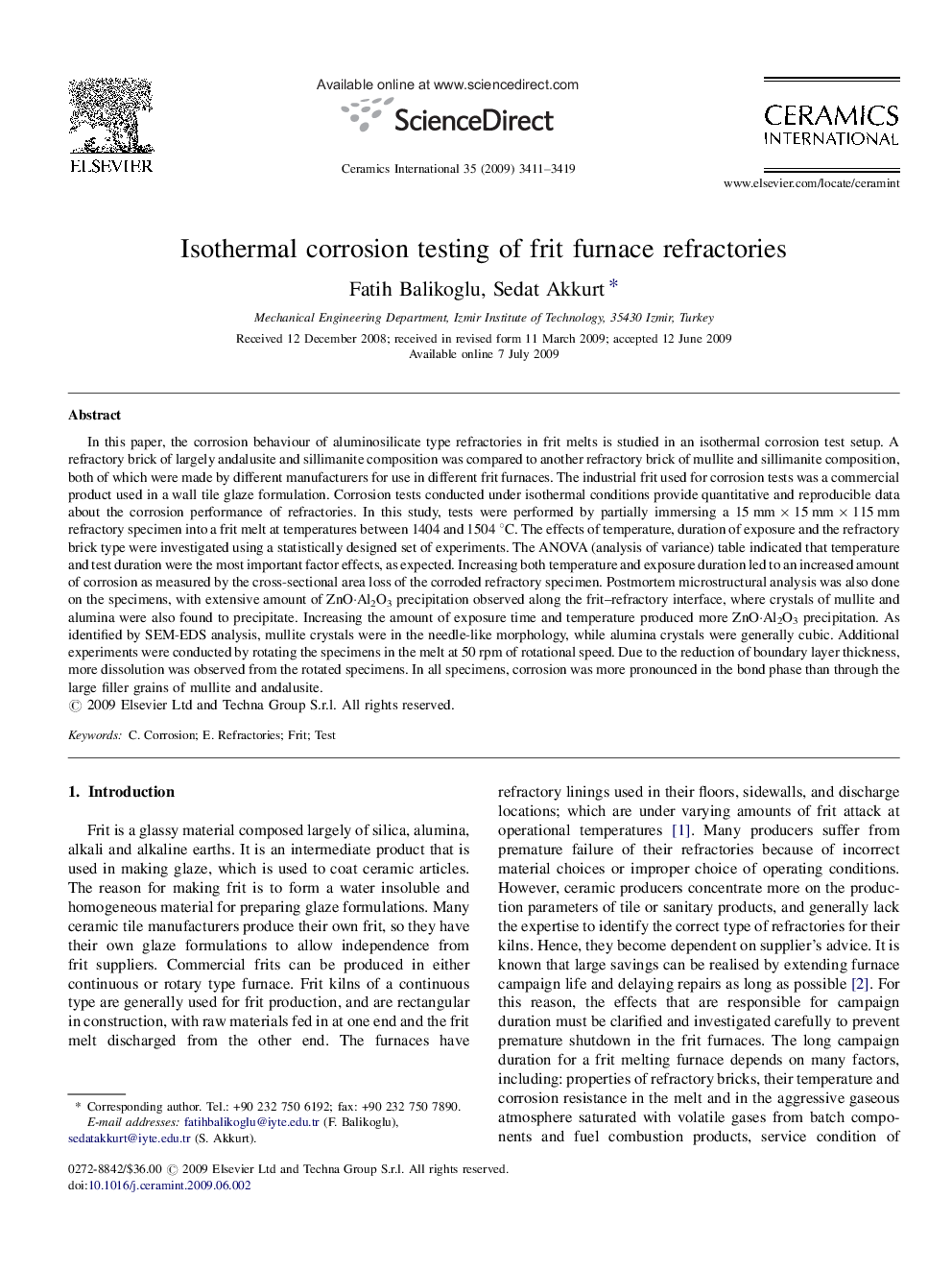| کد مقاله | کد نشریه | سال انتشار | مقاله انگلیسی | نسخه تمام متن |
|---|---|---|---|---|
| 1463336 | 989645 | 2009 | 9 صفحه PDF | دانلود رایگان |

In this paper, the corrosion behaviour of aluminosilicate type refractories in frit melts is studied in an isothermal corrosion test setup. A refractory brick of largely andalusite and sillimanite composition was compared to another refractory brick of mullite and sillimanite composition, both of which were made by different manufacturers for use in different frit furnaces. The industrial frit used for corrosion tests was a commercial product used in a wall tile glaze formulation. Corrosion tests conducted under isothermal conditions provide quantitative and reproducible data about the corrosion performance of refractories. In this study, tests were performed by partially immersing a 15 mm × 15 mm × 115 mm refractory specimen into a frit melt at temperatures between 1404 and 1504 °C. The effects of temperature, duration of exposure and the refractory brick type were investigated using a statistically designed set of experiments. The ANOVA (analysis of variance) table indicated that temperature and test duration were the most important factor effects, as expected. Increasing both temperature and exposure duration led to an increased amount of corrosion as measured by the cross-sectional area loss of the corroded refractory specimen. Postmortem microstructural analysis was also done on the specimens, with extensive amount of ZnO·Al2O3 precipitation observed along the frit–refractory interface, where crystals of mullite and alumina were also found to precipitate. Increasing the amount of exposure time and temperature produced more ZnO·Al2O3 precipitation. As identified by SEM-EDS analysis, mullite crystals were in the needle-like morphology, while alumina crystals were generally cubic. Additional experiments were conducted by rotating the specimens in the melt at 50 rpm of rotational speed. Due to the reduction of boundary layer thickness, more dissolution was observed from the rotated specimens. In all specimens, corrosion was more pronounced in the bond phase than through the large filler grains of mullite and andalusite.
Journal: Ceramics International - Volume 35, Issue 8, December 2009, Pages 3411–3419